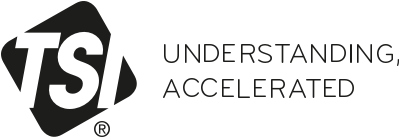
Face It: Clear Masks Let Us See So Much More

Especially in healthcare settings, when infection preventionists need to explain protocols and guidelines to their fellow healthcare workers and patients, something can always be lost in translation if much of the face remains hidden.
Everybody but everybody has experienced it. The feeling that you’re not quite getting the full communicative experience when talking to somebody wearing a face mask—which, in this era of coronavirus disease 2019 (COVID-19), means practically everybody. You miss so much in terms of the facial expressions that we use when we’re talking; the kind of physical expressions that can separate an obligatory “good morning” from something more heartfelt and genuine.
Especially in healthcare settings, when infection preventionists need to explain protocols and guidelines to their fellow healthcare workers and patients, something can always be lost in translation if much of the face remains hidden.
Well, the US Food and Drug Administration may have helped address that problem by granting 510(k) clearance to a company called ClearMask LLC to manufacture a mask that protects the wearer with a clear covering. The mask can be used in hospitals and other healthcare settings, as well as in stores, schools, hotels … you name it.
“The mask is optimized for maximum clarity and comfort, and meets applicable ASTM Level 3 requirements for fluid resistance and flammability, which offers a high level of protection for medical use in environments such as operating rooms,” the company says in a
Perhaps it’s no surprise the mask is the brainchild of graduate students and alumni of Johns Hopkins University, an institution that’s placed itself squarely at the center of the world’s battle against COVID-19. Johns Hopkins data trackers tell us how many people have been infected and how many have died in every nation on Earth every day. Those data are quoted by practically every media outlet in the world, including Infection Control Today®.
The invention of the ClearMask was not rushed. Work began on it in 2017 after the company’s “deaf co-founder experienced an adverse experience during her surgery. Traditional surgical masks blocked her providers’ faces, impeding effective communication and safety,” according to the press release.
Allysa Dittmar, the president of ClearMask, said in the press release that “after three years of research, development, and testing, we are thrilled to bring a human-centered mask to everyone who needs it, especially those who can benefit from improved visual communication, such as children, older adults, deaf and hard of hearing people, and those who do not speak the same language.”
The company is also selling a non-medical clear mask at a lower price that it says has been bought by state emergency management agencies and other essential emergency workers. The consumer masks can be purchased through ClearMask's website at
As for the medical masks, they help “provide protection while bringing much-needed relief through a reassuring smile and familiar face among fear, confusion, and suffering. In addition to blocking particles or droplets with its fully transparent, anti-fog plastic barrier,” the company states in the press release. The mask improves communication and that might help avoid errors and poor outcomes.
“Transparent communication during the customer experience can be critical in establishing rapport and earning trust, while assuring safety as a priority,” the company states.
Newsletter
Stay prepared and protected with Infection Control Today's newsletter, delivering essential updates, best practices, and expert insights for infection preventionists.






